Modern MacBooks are more spacious than ever, but no amount of storage seems to be enough as the ever-inflating digital media is taking over our drives. Cloud servers and external drives are only a partial answer to that. So, if you want to take a load off your drive, you should teach yourself how to get more disk space on Mac with a couple of storage-keeping tricks.
What’s causing low disk space on your Mac?
Before you begin to free up disk space, let’s identify what’s taking it up. From the Apple Menu in the upper left corner of your screen, select About This Mac and then click More Info > Storage Settings in the window that opens. You’ll get a handy, color-coded graph that looks like this:
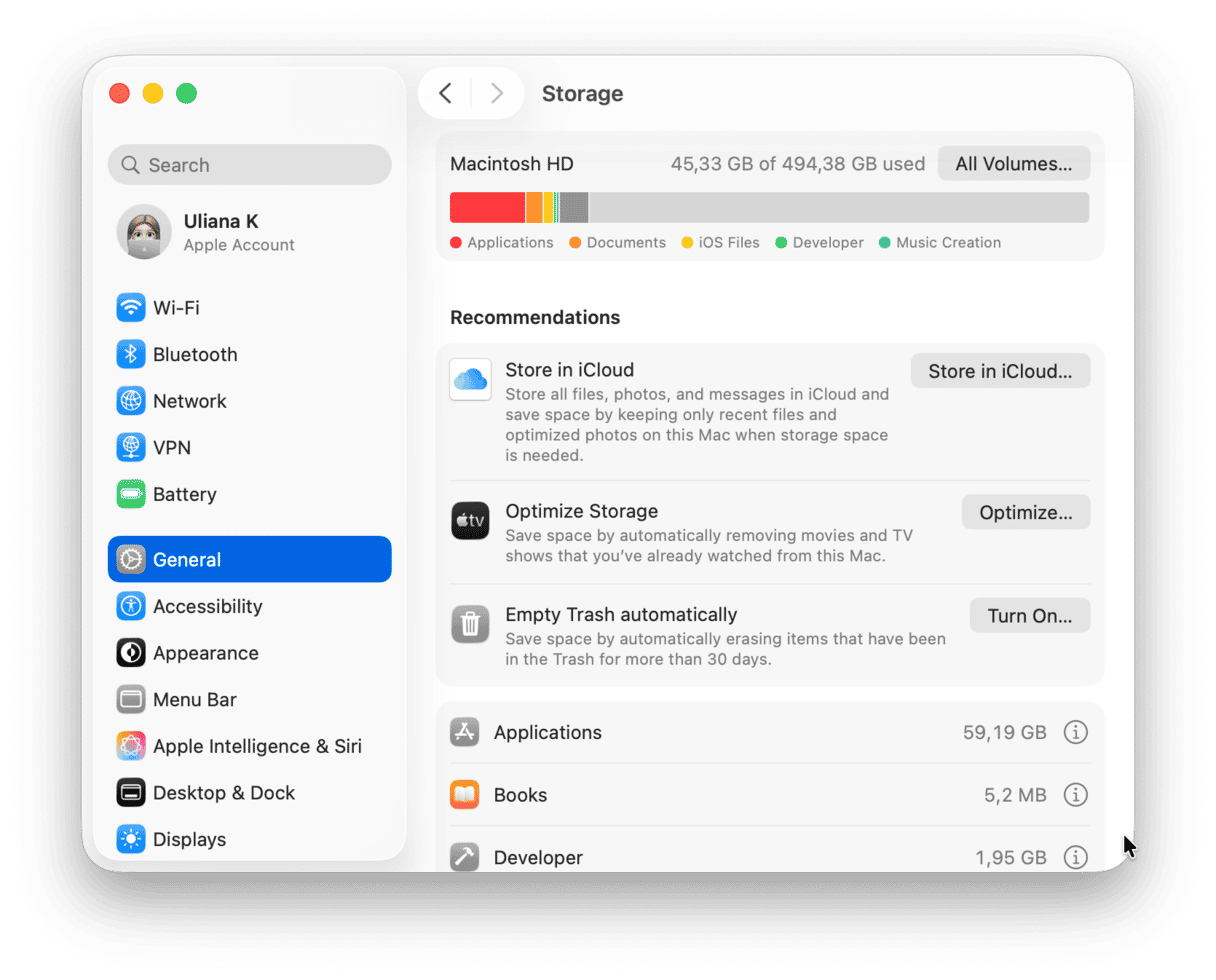
In the above example, you can see that several types of files are taking up the most significant amount of space. Here are the most notable space consumers:
| Apps | All applications installed on your Mac, including those that came preinstalled with macOS and any third-party software you downloaded |
| Documents | All files, documents, and downloads found on your drive |
| System Data | Temporary files, caches, disk images, and app localizations (read more about System Data here) |
| macOS | Files and data necessary for the proper functioning of the operating system |
It’s nice to see what’s stored on your Mac and even nicer to be able to browse the folders that contain the files themselves. Now that you’ve identified what’s on your drive, let’s free up some space.
How to get more space on Mac
There are several options here, so let’s go through a few.
1. Remove large and old files
Often the files that end up taking the most space are tucked away in “cold storage” on your computer. These are big movies, photos, or similar files that you rarely look at but can’t part with, either. In this case, archiving the files and moving them to an external drive is a good way to free up storage space on your Mac.
Locating huge neglected files can be a pain, but it gets super easy with the CleanMyMac app. It has a dedicated Large & Old Files tool. It will help you find massive files and sort them by size to define the largest ones quickly.
As the name suggests, it finds files that occupy a lot of space on your disk but haven’t been opened for a long time. You can quickly review these files right in the app and decide which ones you want to remove. It’s a really handy feature if you have a lot of heavy stuff piled up.
Get started with a free CleanMyMac trial. Then, follow these steps:
- Open CleanMyMac.
- Click My Clutter > Scan > Review All Files.
- Check the Large & Old Files section — select those you no longer need and click Remove.
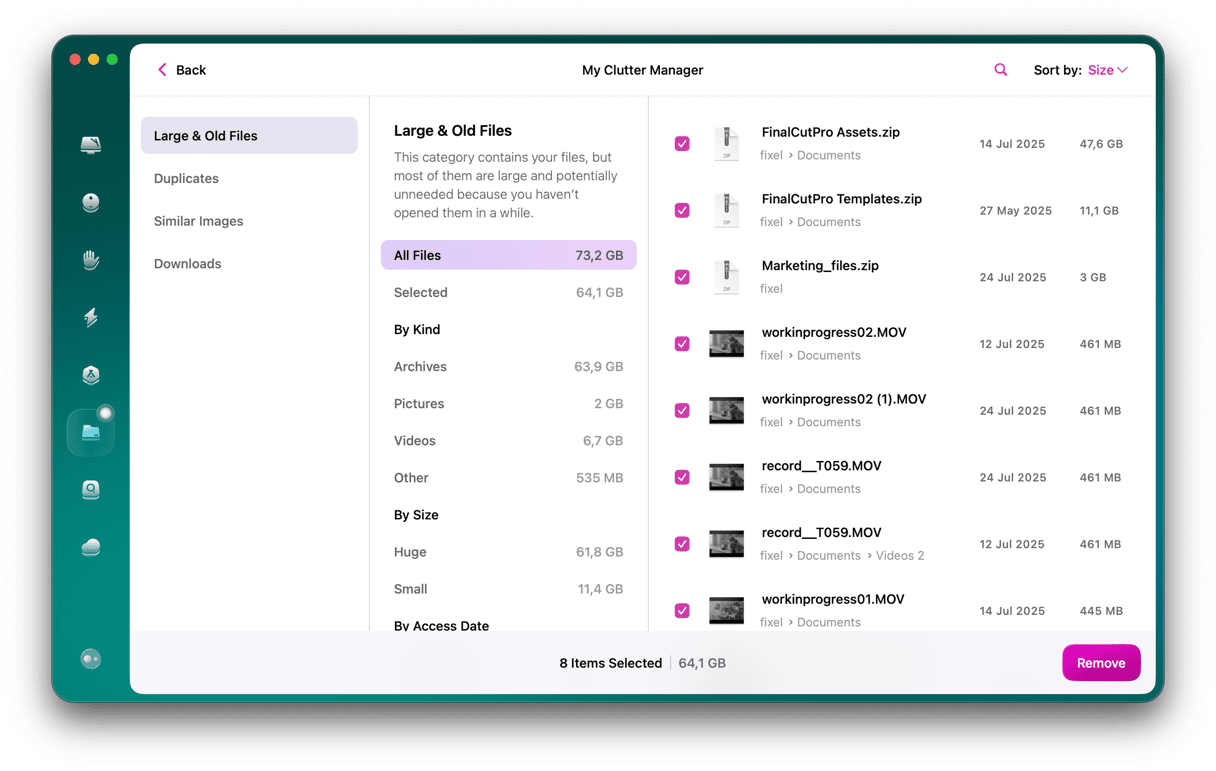
If you want to free up even more space, check other sections, too. This way, you will quickly delete duplicate files, similar images, and forgotten downloads.
2. Empty Trash
Review your Trash bin’s contents one last time before you empty it. Click Trash icon in Dock. Then, click Empty Trash to remove everything.
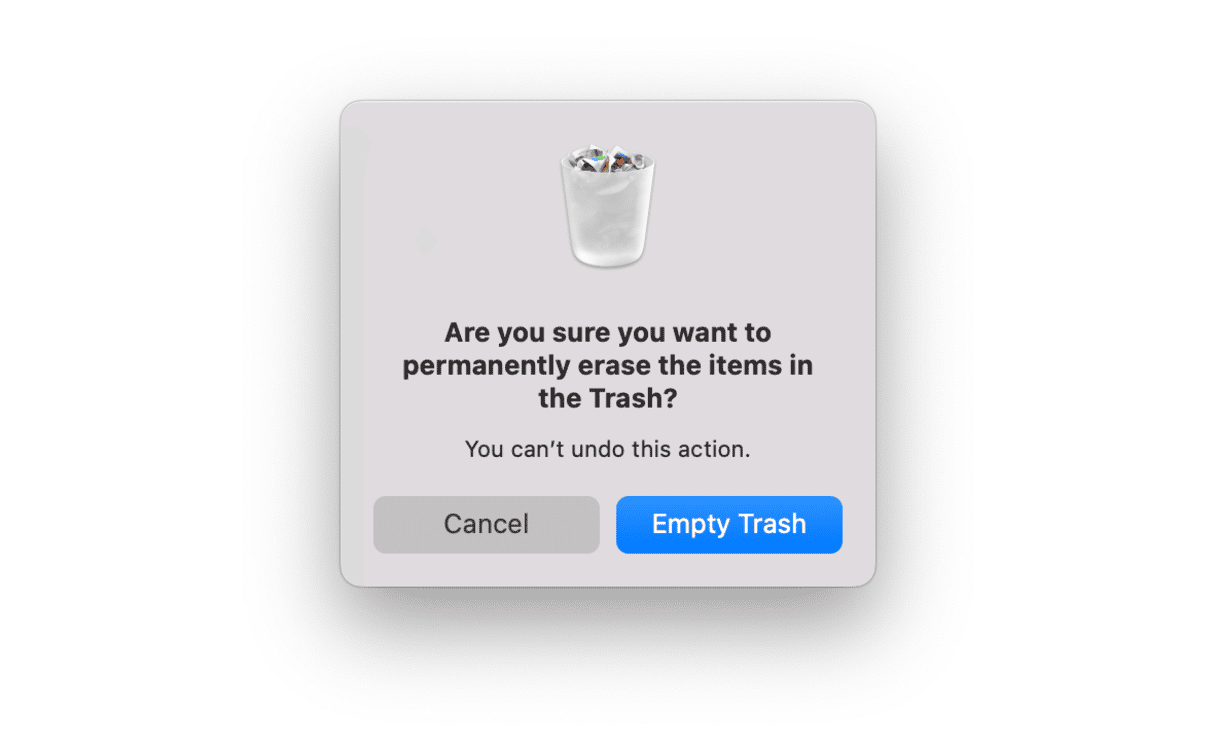
3. Clean up the Downloads folder
Files love to hide in your Mac’s Downloads folder. Old disk images, random photos, unused extensions, ZIP files… they’re all in there, not making a sound. Hiding? Go to the Finder and browse what’s sitting in your Downloads, wasting space on your disk. Anything unnecessary can be dragged to the Trash.
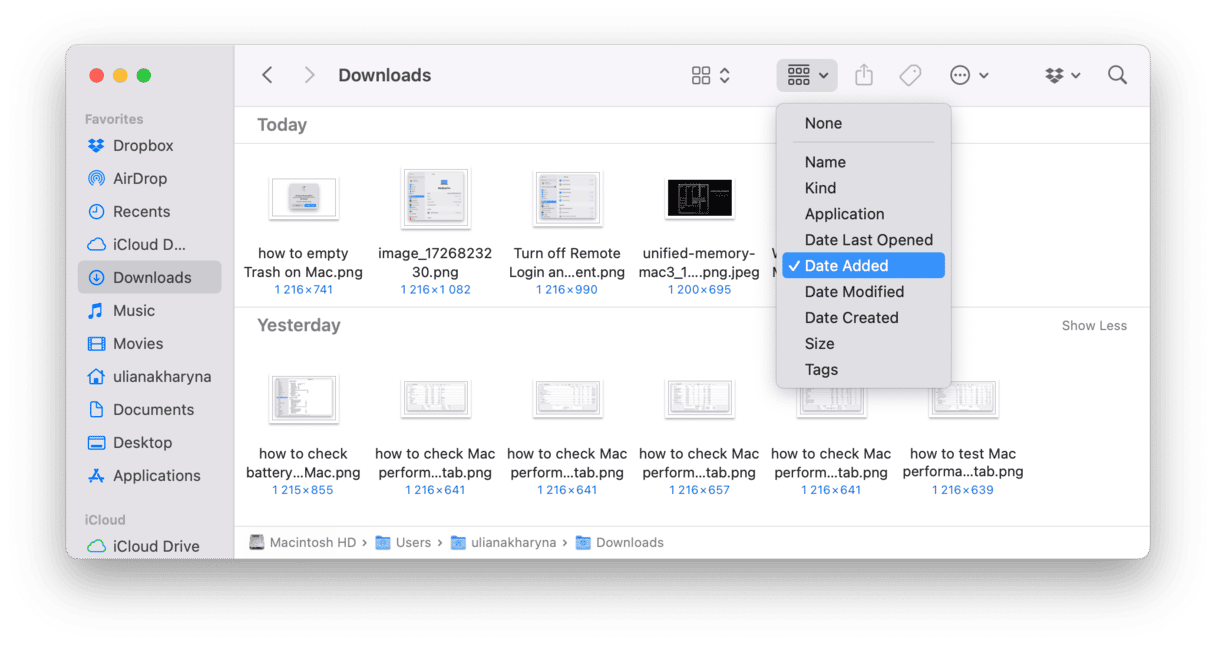
4. Move files to an external hard drive
We all love our media files, although they consume too much space on Mac’s drive. Even if we never open them, we rarely want to delete these files forever. Usually, these are photos or videos and music associated with some significant moments in life, so sending them to Trash is never an option. It is why if you run out of disk space, consider buying an external hard drive and copying these files to it. Once done, they can be safely deleted without you having to worry about losing precious memories.
If you do not have an external hard drive, check out this handy guide on how to choose one.
5. Learn to use Optimized Storage
Optimized Storage is the built-in feature of the macOS. It’s a sorting algorithm that shows different categories of files on your Mac for review and removal.
- Click the Apple Menu > System Settings > General.
- Click Storage and check Recommendations under the colored graph.
By far, the most-space demanding of your files will be Applications. However, other categories of files may also take up significant space. Using the quick tabs, you will decide what is there you can toss away. Just click i next to each category and see what can be removed safely.

At the same time, make sure that you follow other Recommendations found under the colored graph, such as Optimize Storage, Empty Trash automatically, and store in iCloud if any of these work for you.
6. Uninstall unused applications
If you’re like us, you often try an app “...just to see what it does”. While that’s fun, it frequently results in a slew of forgotten apps. It’s a good practice to set a reminder to review your Applications folder and clean out the ones you no longer use. However, note that simply dragging an app into your Mac’s trash doesn’t eliminate all of its related files.
CleanMyMac’s Applications feature, on the other hand, leaves no leftover pieces behind, which means more available space on your Mac. CleanMyMac finds every app-related file, no matter where it has been tucked away, and deletes it from your Mac.
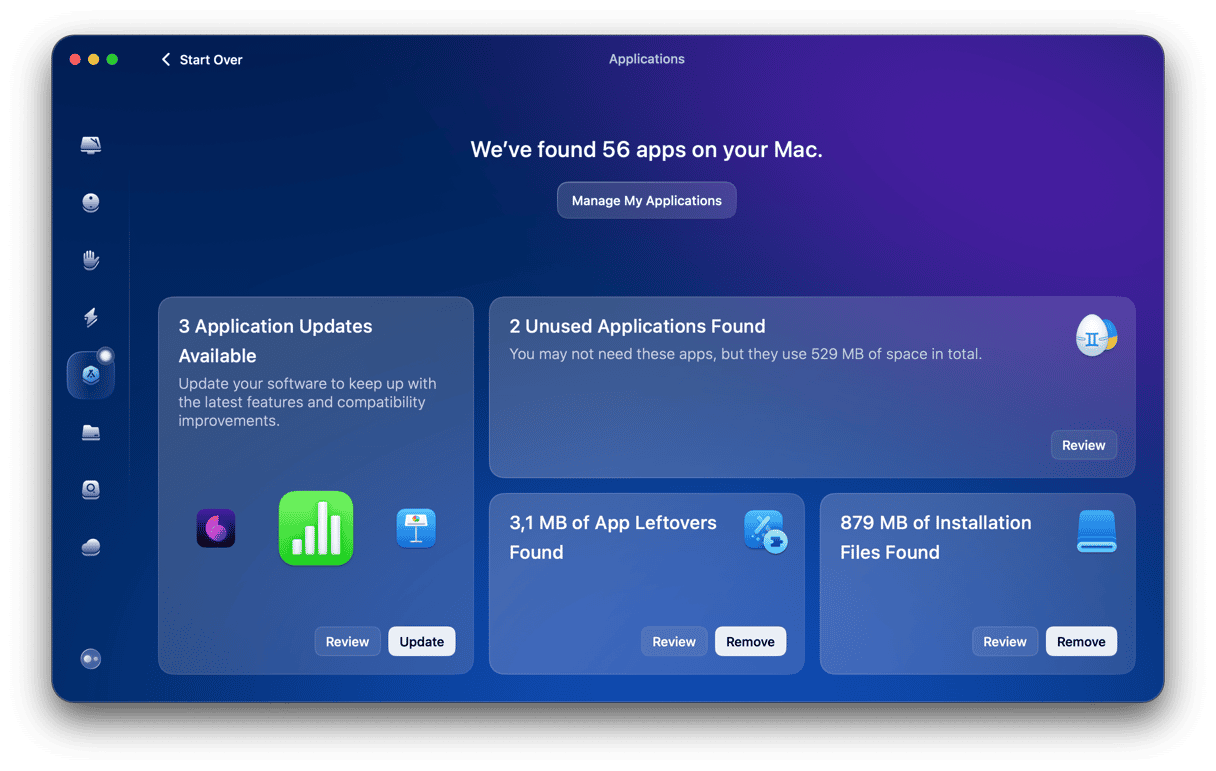
7. Delete old backups
On average, an iPhone backup takes up between 10 and 20 GB of space. So, you use your Mac to back up iOS devices like iPhone or iPad, consider deleting the oldest ones. You may be surprised to find out that it still stores a backup of the devices you no longer have.
Here’s what to do:
- Go to System Settings > General > Storage.
- Scroll down to iOS Files and click an ‘i’ next to it.
- Select a backup you no longer need and click Delete.

Remember to keep the latest one so that you can restore your device should you need to.
8. Get rid of system junk
It’s not just your files that are hogging disk space — it’s also useless system files like logs, cache, unused binaries, old iOS backups and installers, and whatnot. Fortunately, CleanMyMac can find and eliminate them all to make low disk space a thing of the past. At last.
System junk is comprised of:
- User cache files
- Application cache
- Broken downloads
- Unused .DMG installers
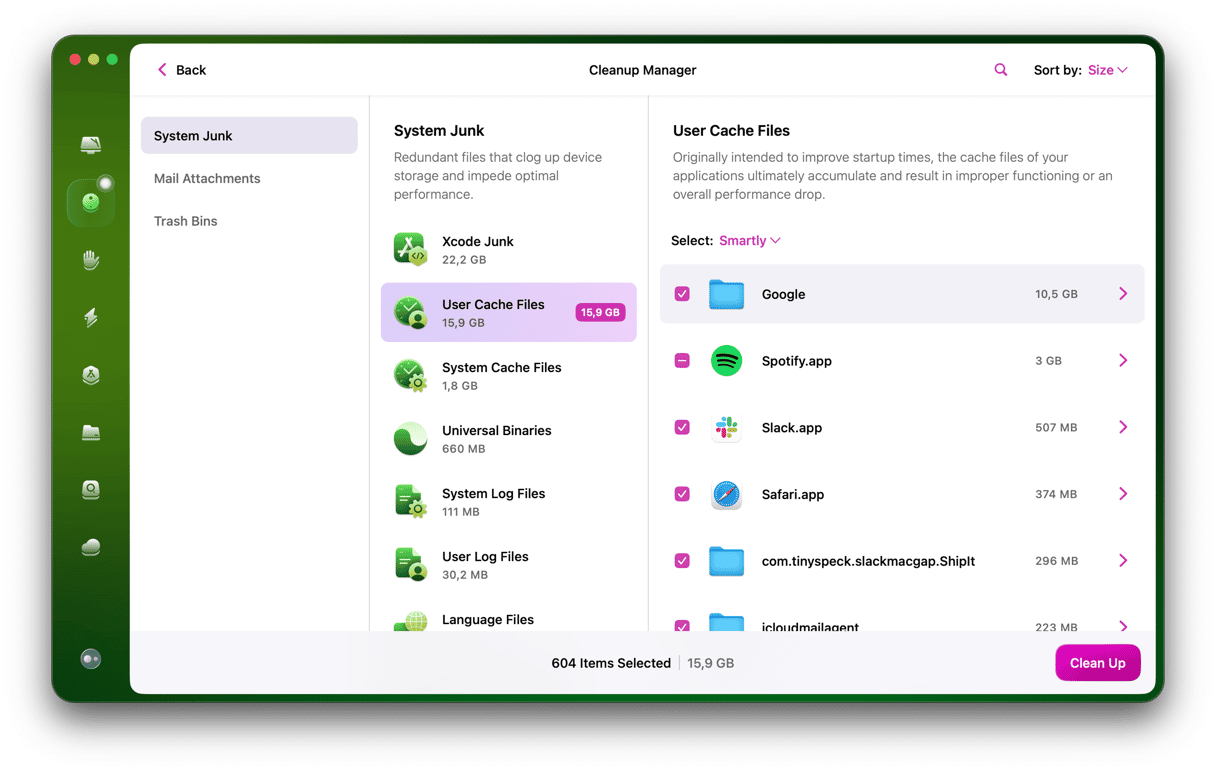
With just a few clicks, you’ll discover what’s where and what’s ripe for deletion. The best way to free up hard drive space is to run CleanMyMac and wave goodbye to space-hogging files. Don’t worry. You won’t miss them.
9. Free up or buy more iCloud storage
iCloud is a handy way to keep files off your Mac and in the cloud. Your Apple account includes 5GB of free iCloud storage, but that fills up fast, especially if you're syncing your Mac, iPhone, and iPad.
You can buy more storage, but first, see if you can free up space by cleaning what’s already there. CleanMyMac’s Cloud Cleanup tool connects to your iCloud Drive and helps you identify large or redundant files taking up the most space. Simply start your free CleanMyMac trial to try this feature. You’ll be able to scan, review, and clean up your iCloud storage, potentially saving you from buying more.
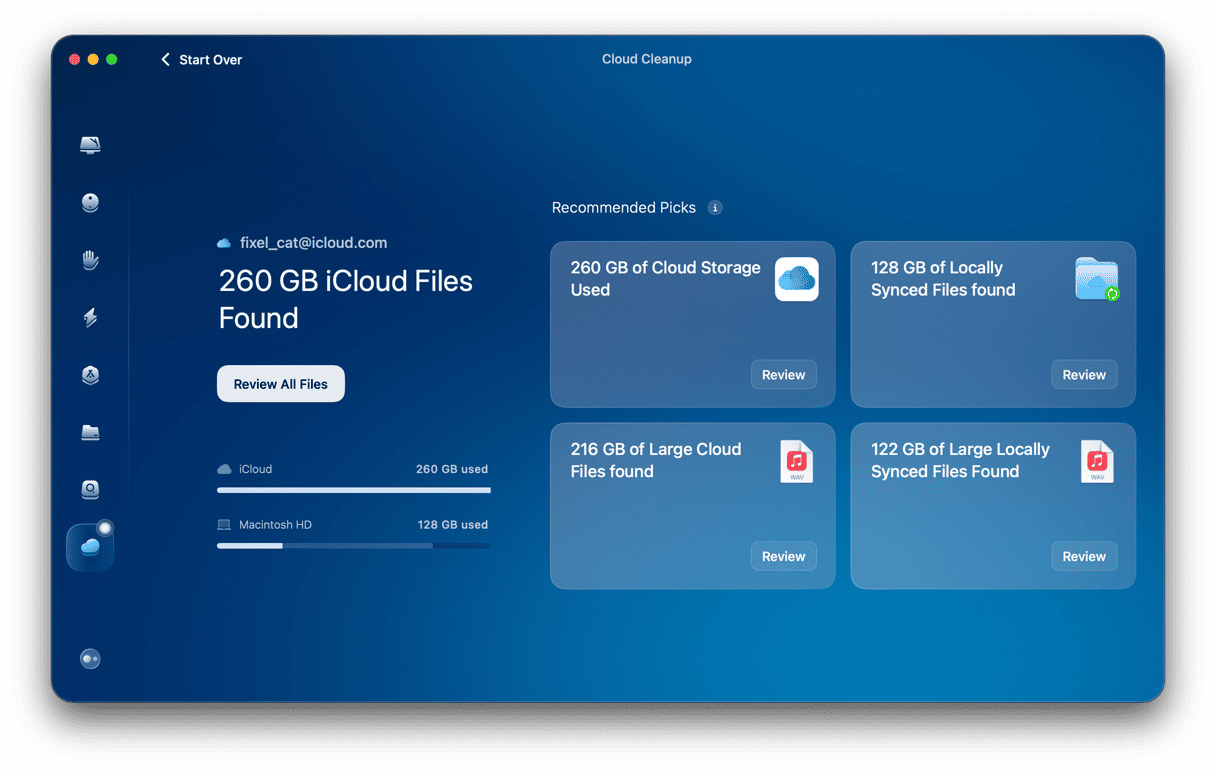
If, after cleanup, you still need extra space, upgrading your iCloud plan is simple:
- Open System Settings.
- Click your name at the top of the window > iCloud.
- Click Upgrade and select an appropriate plan — you can purchase up to 12TB.
- Click Upgrade to iCloud+
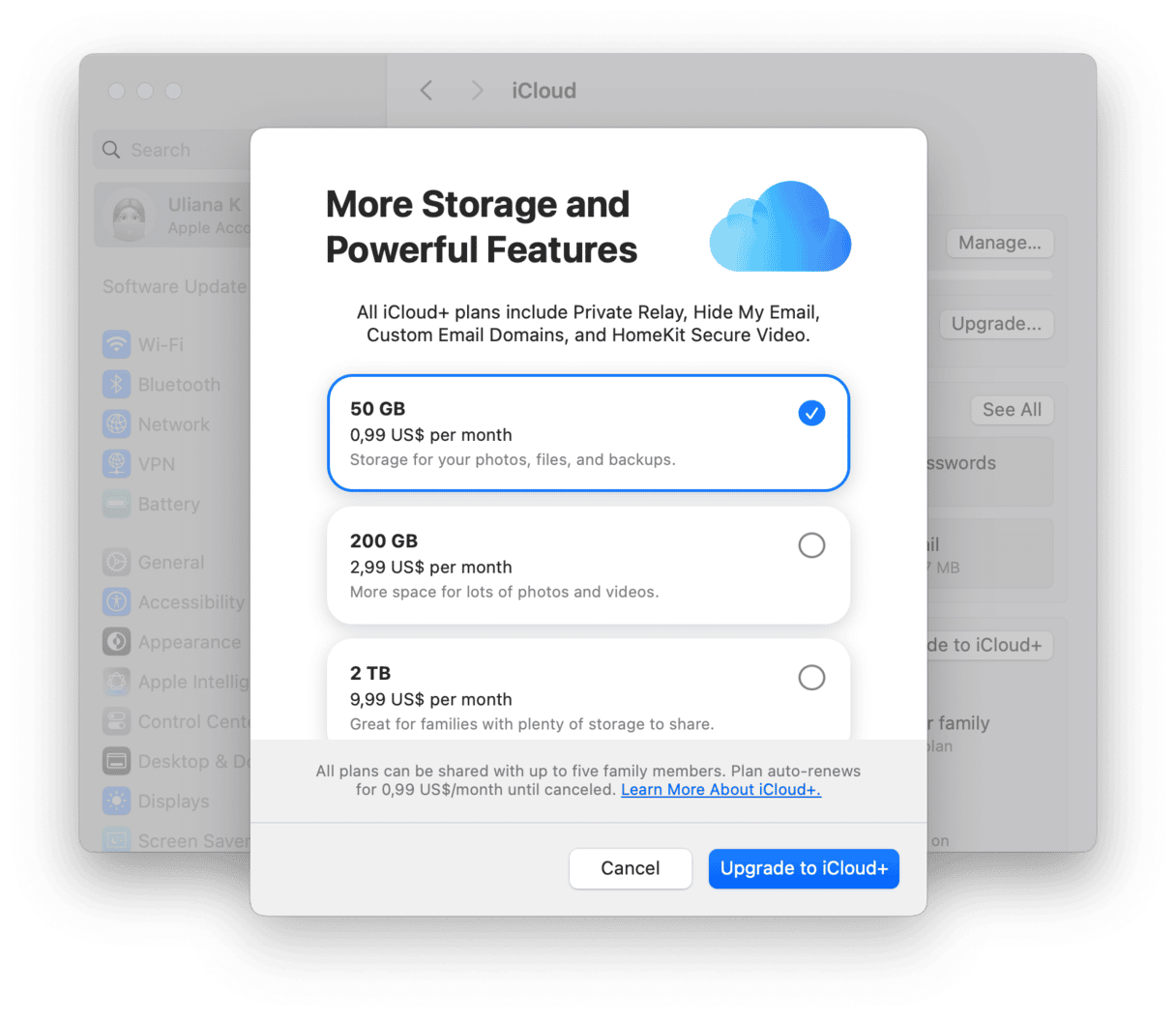
Alternatively, you can click Manage next to Account Storage above the graph in the iCloud section of System Settings and click Change Storage Plan.
10. Add more storage with SD card
Finally, you can use an SD card to add more storage to your Mac. It is an alternative to investing in iCloud storage. However, it is less convenient since not all Macs have slots for SD cards, and for most of them, you’ll need an adapter. Moreover, not all SD cards are supported. Check out this article from Apple to find out which Macs have SD and SDXC card slots and which cards are supported.
Hopefully, you managed to clear a lot of disk space — drop by for more Mac housekeeping tips. 😉
Frequently asked questions
1. What takes up the most storage space on Mac?
It all depends, but for most Mac users, documents (including photos and videos), applications, and macOS itself are the most significant space hoggers. If you work a lot with photo or video editing tools or have many apps that you actively use, these would greatly add to System Data.
2. What is the quickest way to free up storage on Mac?
There is no one quickest solution, but you can delete unnecessary applications, clear out the Downloads folder, remove unneeded photos and videos, and empty the Trash as a good starting point. Alternatively, you can use a Mac cleaner app like CleanMyMac to speed up the process by letting it find system junk and large and old files as well as completely delete applications with just a few clicks.
3. Can I add more storage to my Mac?
You can invest in more iCloud storage or use an SD card if your Mac supports one or an external drive to store your files.






